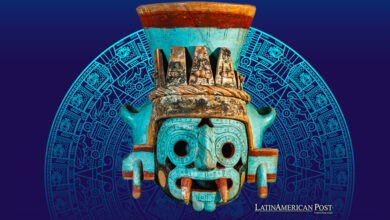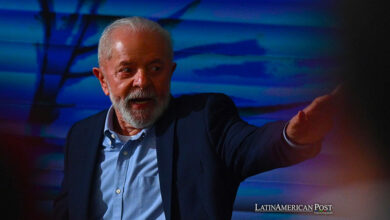Cuba: This is what Miguel Díaz-Canel’s international tour left
For eleven days, the Cuban president traveled across Asian to strengthen relations with several countries

Cuban President Miguel Díaz-Canel culminated his first tour through Europe and Asia. The diplomatic meetings began on November 1 and ended on November 12. One of the first countries that he visited was Russia, a state that has always been close to Cuba because of its ideologies. In his meeting with Russian President Vladimir Putin several agreements were consolidated.
Leer en español: Cuba: Lo que dejó la gira de Miguel Díaz-Canel por Asia
One of them is that Russia will help with the modernization of the railway service. It was also agreed that the island would allow the installation of Russian navigation satellite systems, as reported by El País of Spain. Likewise, the country approved a loan of 38 million euros for the acquisition of weapons manufactured in Russia.
On the other hand, Putin and Diaz-Canel took advantage of the visit to ask the United States not to abandon the nuclear arms treaty of short and long range, which has existed since 1987.
In recent days Trump announced his retirement, arguing that "Russia has violated the agreement. They have been violating it for many years." In addition to the foregoing, it was also requested that the United States lift the economic, commercial and financial embargoes it has on Cuba.
Fuimos cordialmente recibidos por el Presidente Putin y sostuvimos conversaciones oficiales. #Cuba y #Rusia están unidas por amistad, respeto y apoyo mutuo. Han mejorado las relaciones comerciales entre los dos países #NoMasBloqueo #SomosCuba pic.twitter.com/AmOja6sfA9
— Miguel Díaz-Canel Bermúdez (@DiazCanelB) 2 de noviembre de 2018
Strengthening ties
The next country in the president's tour was the Democratic People's Republic of Korea. During his visit, he established dialogues on "cooperation agreements in various sectors such as education, oil, agriculture, and trade, as well as diplomatic and cultural exchanges," as Telesur stated.
With this visit, Diaz-Canel reaffirmed the bonds of friendship that he has with one of the most repressive countries that exist today and that was how the North Korean media Rodong Sinmun explained it.
"The leaders of the two countries had a firm handshake of farewell and warm embraces, promising to keep their hands raised under the flag of socialism and to continue advancing in the socialist construction in the two countries by the only road to victory." Díaz-Canel also expressed the friendship ties through his social networks.
A la nación que hoy nos despide, después de darnos una acogida cálida e inolvidable, nos unen fuertes lazos, nacidos de la legendaria amistad entre nuestros líderes históricos, Fidel Castro y Kim Il Sung. #SomosCuba
— Miguel Díaz-Canel Bermúdez (@DiazCanelB) 6 de noviembre de 2018
Support for the communist regime
After his visit to North Korea, Diaz-Canel traveled to the Republic of China where he met with Xi Jing Pi, who expressed "support for the Cuban communist regime," as El Comercio said. Thus, he affirmed that "China will strongly support Cuba in the defense of its national sovereignty and in the path of socialism with its national conditions."
It should be noted that Cuba was one of the first countries in the West to recognize China as a communist power. Likewise, "it is the first creditor of Cuba and one of its main commercial partners", as quoted by the same media.
Fructífero e inolvidable encuentro con el Presidente Xi Jinping. Como lo calificó #Fidel, un revolucionario firme y capaz. Entre la tradición y la proyección al futuro, #China abre puertas donde otros levantan muros. #SomosCuba
— Miguel Díaz-Canel Bermúdez (@DiazCanelB) 8 de noviembre de 2018
A prolific visit to Vietnam
Upon their arrival in Vietnam, both presidents affirmed that "We share the same positive assessment on the development of cooperation between the two countries and our bilateral political ties have narrowed and are becoming more reliable due to the frequent exchanges of delegations and experiences," according to Granma.
However, the visit was more to strengthen bonds of friendship and to consolidate them since, according to El Siglo, "Political trust, brotherhood and solidarity have always characterized the links between the two peoples, parties and governments, a reality that, as it was ratified during the exchange, will continue to characterize the historical links in the future."
En #CiudadHoChiMinh estamos cerrando nuestra exitosa visita a Vietnam. Cu Chi tocó muy fuerte nuestros sentimientos. El parque #TecnológicoDeSaigón nos dio respuestas para un camino que se abre para nosotros. Hasta siempre querido #Vietnam. #SomosCuba pic.twitter.com/F01xkJ5OzO
— Miguel Díaz-Canel Bermúdez (@DiazCanelB) 10 de noviembre de 2018
The last stop
Laos was the country that closed the first Asian tour of the Cuban president. Diaz-Canel met with his equal, Bounnhang Vorachith, to sign agreements that encourage economic and sports cooperation.
As for the economy, a "memorandum of understanding on the cooperation between the LPDR Bank and the Central Bank of Cuba, was also signed according to the chancellery of Cuba." Thus, that is how the eleven-day tour of the Cuban president in Asia concluded.
La profunda espiritualidad asiática cautiva en #Laos. Aquí se nos quiere mucho desde los tiempos de la solidaridad combativa. Su crecimiento económico y la calidad de las obras públicas, inspiran. Gracias por el ejemplo. #SomosCuba#SomosContinuidad
— Miguel Díaz-Canel Bermúdez (@DiazCanelB) 11 de noviembre de 2018
However, on his return he traveled to the United Kingdom to talk about the current situation of the two countries, recognizing that the United Kingdom had strongly supported the Cuban Revolution. He also stressed that relations with that country could be improved if the blockade imposed by the United States were withdrawn.
Diálogo fructífero con miembros de Cámara de los Lores. El bloqueo no puede impedir relaciones en la cultura, la educación, los deportes, la ciencia. Hay muchos puentes por tender. #NoMasBloqueo #SomosCuba
— Miguel Díaz-Canel Bermúdez (@DiazCanelB) 14 de noviembre de 2018
What drove the visit?
The tour, organized in a very short time, had as objective to obtain financing so that the island comes out afloat. It should be noted that in his tour he only visited those who had an ideology similar to that of Cuba, with the exception of the United Kingdom, to reaffirm the importance that communism still has in those few countries that execute it.
On the other hand, although he managed to strengthen friendships and create important ties with distant countries, he did not manage to create a financing that could give his country the economic relief that so badly needs.
LatinAmerican Post | Laura Viviana Guevara Muñoz
Translated from "Cuba: Lo que dejó la gira de Miguel Díaz-Canel por Asia"
Listen this article





